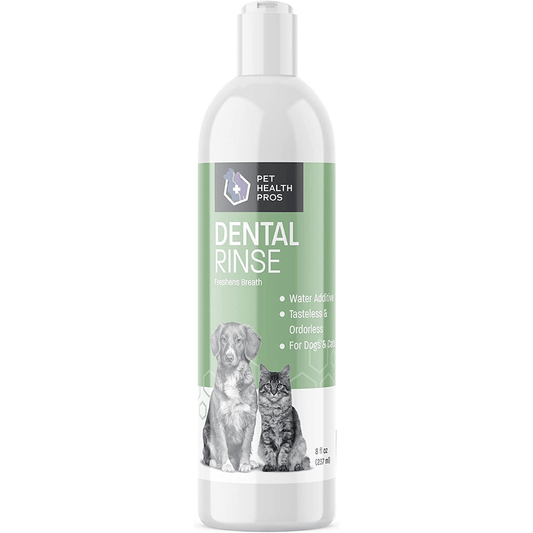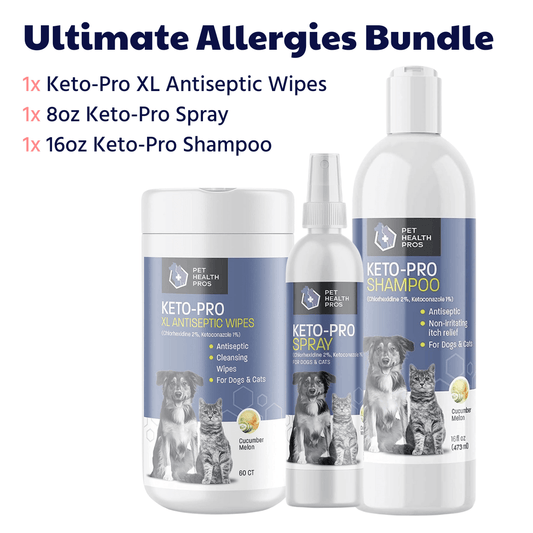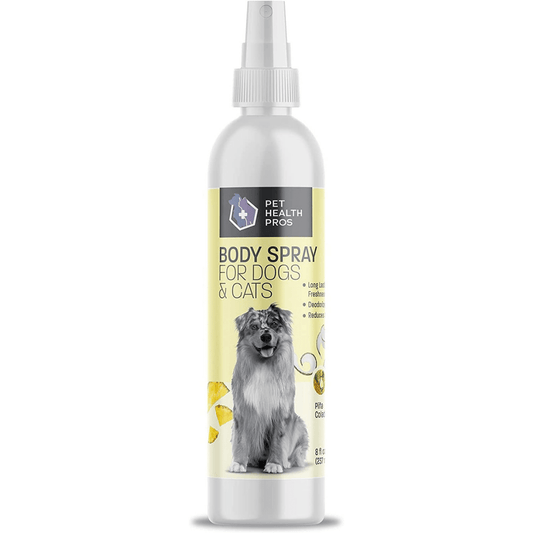Dog gingivitis is a common dental condition that affects dogs of all ages. It is characterized by inflammation of the gums and can lead to serious complications if left untreated. Understanding the causes and treatments of dog gingivitis is important for dog owners to ensure the oral health of their furry friends. In this article, we will explore the causes of dog gingivitis, the signs and symptoms to look out for, and the various treatment options available. Additionally, we will discuss the key takeaways to help dog owners prevent and manage dog gingivitis effectively.
Key Takeaways
- Dog gingivitis is characterized by inflammation of the gums.
- Poor dental hygiene and plaque buildup are common causes of dog gingivitis.
- Signs of dog gingivitis include red and swollen gums, bad breath, and difficulty eating.
- Regular dental check-ups and professional dental cleanings are essential for diagnosing and treating dog gingivitis.
- Preventing dog gingivitis involves regular brushing of the dog's teeth, providing dental chews, and a balanced diet.
Understanding Dog Gingivitis
What is Dog Gingivitis?
Dog gingivitis is a common dental condition that affects dogs of all ages. It is characterized by inflammation of the gums, which can lead to redness, swelling, and discomfort. Gingivitis is caused by the buildup of plaque and tartar on the teeth, which harbors bacteria that irritate the gums. If left untreated, dog gingivitis can progress to more serious dental problems, such as periodontal disease and tooth loss.
Causes of Dog Gingivitis
Dog gingivitis can be caused by a variety of factors. Poor oral hygiene is one of the main culprits, as it allows plaque and tartar to build up on the teeth and gums. Bacterial infections can also contribute to the development of gingivitis. Certain breeds of dogs may be more prone to gingivitis due to genetic factors. Additionally, diet plays a role in oral health, with a high sugar or carbohydrate diet increasing the risk of gingivitis.
To prevent dog gingivitis, it is important to establish a regular dental care routine. This includes brushing your dog's teeth regularly, using dental wipes or chews to help remove plaque, and providing a healthy diet that promotes good oral health. Regular veterinary check-ups are also essential to catch any signs of gingivitis early and prevent further complications.
Signs and Symptoms of Dog Gingivitis
Dog gingivitis is a common dental condition that affects many dogs. It is important for dog owners to be aware of the signs and symptoms of gingivitis in order to seek appropriate treatment. Gingivitis is the inflammation of the gums, which can be caused by a buildup of plaque and tartar on the teeth. If left untreated, gingivitis can progress to more serious dental issues such as periodontal disease and tooth loss.
Here are some common signs and symptoms of dog gingivitis:
- Bad breath: One of the first signs of gingivitis in dogs is bad breath. If your dog's breath has a foul odor, it may be a sign of gum inflammation.
- Red and swollen gums: Gingivitis can cause the gums to become red, swollen, and sensitive. You may notice that your dog's gums appear more inflamed than usual.
- Bleeding gums: Another common symptom of gingivitis is bleeding gums. If you see blood on your dog's toys or food, it may be a sign of gum disease.
If you notice any of these signs and symptoms in your dog, it is important to consult with a veterinarian for a proper diagnosis and treatment plan. Early intervention can help prevent the progression of gingivitis and maintain your dog's oral health.
Tip: Regular dental care, including brushing your dog's teeth and providing dental treats, can help prevent gingivitis and promote good oral hygiene.
Preventing Dog Gingivitis
Preventing dog gingivitis is crucial for maintaining your pet's oral health. Here are some important steps you can take:
-
Regular Brushing: Brush your dog's teeth at least once a day using a dog-specific toothbrush and toothpaste. This helps remove plaque and prevent the buildup of tartar.
-
Dietary Considerations: Feed your dog a balanced diet that includes high-quality dog food. Avoid giving them sugary treats or human food, as these can contribute to dental problems.
-
Chew Toys: Provide your dog with appropriate chew toys that can help clean their teeth and massage their gums. Look for toys that are specifically designed for dental health.
Tip: Avoid giving your dog hard toys or bones that can cause tooth fractures or other injuries.
- Regular Veterinary Check-ups: Schedule regular dental check-ups with your veterinarian. They can assess your dog's oral health and provide professional cleanings if necessary.
Diagnosing Dog Gingivitis
Veterinary Examination
During a veterinary examination for dog gingivitis, the veterinarian will carefully examine your dog's mouth and gums. They will look for signs of inflammation, redness, swelling, and bleeding. They may also check for the presence of plaque and tartar buildup on the teeth. In some cases, the veterinarian may use a dental probe to measure the depth of the gum pockets, which can indicate the severity of the gingivitis.
If necessary, the veterinarian may recommend further diagnostic tests, such as dental X-rays or a gum biopsy, to assess the extent of the gingivitis and rule out any underlying dental or oral health issues. These tests can provide valuable information about the condition of your dog's teeth and gums, helping the veterinarian determine the most appropriate treatment plan.
It is important to schedule regular veterinary examinations for your dog to catch gingivitis early and prevent it from progressing into more serious dental problems.
Dental X-rays
Dental X-rays are an important diagnostic tool in the diagnosis and treatment of dog gingivitis. They allow veterinarians to see what is happening beneath the gum line and identify any hidden issues that may not be visible during a visual examination. X-rays can reveal the extent of bone loss, the presence of abscesses or tumors, and the condition of the tooth roots. This information is crucial in determining the appropriate treatment plan for the dog.
In addition to providing valuable information, dental X-rays are also safe for dogs. The level of radiation used in veterinary dental X-rays is minimal and well within safe limits. The benefits of obtaining detailed images of the dog's teeth and jaw outweigh the minimal risk of radiation exposure.
To perform dental X-rays, the dog is usually placed under general anesthesia. This ensures that the dog remains still and cooperative during the procedure, allowing for accurate and clear images to be captured. Once the X-rays are taken, they are carefully examined by the veterinarian to assess the dog's oral health and develop a comprehensive treatment plan.
Gum Biopsy
A gum biopsy is a diagnostic procedure that involves taking a small sample of gum tissue for further examination. It is usually performed when other diagnostic tests, such as a physical examination and dental x-rays, are inconclusive. The sample is sent to a laboratory where it is analyzed under a microscope to determine the presence of any abnormalities or underlying conditions.
During a gum biopsy, the veterinarian will numb the area with a local anesthetic and then use a small instrument to remove a small piece of gum tissue. The procedure is relatively quick and minimally invasive.
After the gum biopsy, the sample is sent to a pathology laboratory where it is examined by a pathologist. The pathologist will look for signs of inflammation, infection, or abnormal cell growth. The results of the biopsy can help determine the appropriate treatment for dog gingivitis.
It is important to follow the veterinarian's instructions for post-biopsy care, such as avoiding hard or crunchy foods that may irritate the gums and keeping the area clean to prevent infection.
Treating Dog Gingivitis
Professional Dental Cleaning
Professional dental cleaning is an essential part of treating dog gingivitis. During a dental cleaning, a veterinarian will thoroughly clean your dog's teeth and gums to remove plaque and tartar buildup. This process is usually done under general anesthesia to ensure the comfort and safety of your dog.
Benefits of Professional Dental Cleaning:
- Removes plaque and tartar: Professional dental cleaning can effectively remove plaque and tartar that cannot be removed through regular brushing.
- Prevents gum disease: By removing plaque and tartar, professional dental cleaning helps prevent gum disease and reduces the risk of tooth loss.
- Freshens breath: Dental cleaning can help eliminate bad breath caused by bacteria in the mouth.
It is important to note that professional dental cleaning is not a one-time solution. Regular dental cleanings, along with proper home care, are necessary to maintain your dog's oral health.
Tip: To maintain your dog's oral hygiene between dental cleanings, consider using dental wipes specifically designed for dogs. These wipes can help remove plaque and freshen your dog's breath. Check out the Dental Wipes for Dogs Teeth and Cats by Pet Health Pros for an effective oral care solution.
Antibiotics
Antibiotics are commonly used in the treatment of dog gingivitis. They are prescribed by veterinarians to help control the bacterial infection that causes inflammation in the gums. Clindamycin, amoxicillin-clavulanate, and amoxicillin are some of the most commonly prescribed oral antibiotics for dog gingivitis. These antibiotics have been recommended as first-line options for treatment. It is important to follow the veterinarian's instructions and complete the full course of antibiotics to effectively treat the infection.
Dental Surgery
In some cases, dental surgery may be necessary to treat severe cases of dog gingivitis. This procedure is typically performed by a veterinarian and involves the removal of infected or damaged teeth. Dental surgery is often recommended when other treatments, such as professional dental cleaning and antibiotics, have not been effective in improving the condition of the dog's gums and teeth.
During dental surgery, the dog is placed under anesthesia to ensure a pain-free experience. The veterinarian will carefully examine the dog's mouth and remove any teeth that are causing pain or contributing to the progression of gingivitis. After the surgery, the dog may experience some discomfort and swelling, which can be managed with pain medication and a soft diet.
It's important to follow the veterinarian's post-surgery instructions and provide proper home care for the dog's oral health. This may include regular brushing, using dental rinses or gels, and providing dental treats or toys to help maintain good oral hygiene.
Home Care for Dog Gingivitis
Home care plays a crucial role in managing and preventing dog gingivitis. Here are some important steps you can take to ensure your dog's oral health:
-
Encourage good dental hygiene: Start early by introducing dental chews as treats and regularly brushing your dog's teeth. This helps remove plaque and prevent the buildup of tartar.
-
Offer dental-friendly food: Choose food that promotes dental health, such as specially formulated dental diets or dental treats. These can help reduce plaque and tartar formation.
-
Visit the vet regularly: Regular dental check-ups are essential for early detection and treatment of gingivitis. Your veterinarian can provide professional dental cleanings and offer guidance on maintaining your dog's oral hygiene.
Remember, consistent home care practices combined with professional veterinary care are key to keeping your dog's gums healthy and preventing the progression of gingivitis.
Complications of Dog Gingivitis
Periodontal Disease
Periodontal disease is one of the complications that can arise from untreated dog gingivitis. It is a more advanced stage of gum disease that affects the tissues and structures supporting the teeth. Periodontal disease can cause the gums to recede, leading to tooth loss and bone damage. It can also result in the formation of pockets between the gums and teeth, which can harbor bacteria and contribute to further infection.
To prevent periodontal disease, it is important to address dog gingivitis early on. Regular dental cleanings by a veterinarian, along with proper at-home dental care, can help prevent the progression of gingivitis to periodontal disease.
In addition to periodontal disease, untreated dog gingivitis can also lead to tooth loss. As the gums become inflamed and infected, they can no longer provide proper support to the teeth, causing them to become loose and eventually fall out. Tooth loss can significantly impact a dog's ability to eat and can also affect their overall health and well-being.
Another potential complication of dog gingivitis is the development of systemic infections. The bacteria present in the infected gums can enter the bloodstream and spread to other parts of the body, leading to systemic infections. These infections can affect various organs and systems, including the heart, liver, and kidneys. It is crucial to treat dog gingivitis promptly to prevent the risk of systemic infections.
To maintain your pet's oral health, it is essential to prioritize dental care. Regular brushing with pet-friendly toothpaste, providing dental chews, and scheduling routine dental check-ups with a veterinarian are all important steps in preventing and managing dog gingivitis. Additionally, incorporating a balanced diet and avoiding sugary treats can also contribute to maintaining good oral hygiene for your furry friend.
Tooth Loss
Tooth loss is one of the potential complications of dog gingivitis. When the gums become inflamed and infected, it can lead to the destruction of the supporting structures of the teeth, including the periodontal ligament and the alveolar bone. As a result, the affected teeth may become loose and eventually fall out. Preventing tooth loss in dogs with gingivitis requires early intervention and proper dental care. Regular brushing, dental cleanings, and a balanced diet can help maintain good oral hygiene and reduce the risk of tooth loss.
Systemic Infections
Systemic infections are one of the potential complications of dog gingivitis. When left untreated, the inflammation and infection in the gums can spread to other parts of the body, leading to systemic infections. These infections can affect vital organs such as the heart, liver, and kidneys, causing serious health problems for dogs. It is important to seek veterinary care if your dog is showing signs of gingivitis to prevent the development of systemic infections.
Gingivitis is a common dental problem in dogs that can lead to serious complications if left untreated. It is characterized by inflammation of the gums, which can cause pain, bleeding, and bad breath. If your dog has gingivitis, it is important to seek veterinary care to prevent further damage to their oral health. At Pet Health Pros, we understand the importance of maintaining your pet's dental health. We offer a wide range of affordable pet health supplies, including dental care products, that are made right here in the USA. Our products are top-grade and backed by a 100% satisfaction guarantee, so you can shop with confidence. Don't let your dog suffer from the complications of gingivitis. Visit Pet Health Pros today and give your pet the dental care they deserve.
Conclusion
In conclusion, dog gingivitis is a common dental condition that can cause discomfort and pain for our furry friends. It is primarily caused by poor dental hygiene and a buildup of plaque and tartar. However, with proper care and regular dental check-ups, gingivitis can be prevented and treated. Brushing your dog's teeth regularly, providing dental chews, and scheduling professional cleanings are all effective ways to maintain good oral health. Remember, a healthy mouth leads to a happy and healthy dog!
Frequently Asked Questions
What is dog gingivitis?
Dog gingivitis is an inflammation of the gums in dogs. It is usually caused by a buildup of plaque and tartar on the teeth.
What are the signs and symptoms of dog gingivitis?
The signs and symptoms of dog gingivitis include red, swollen gums, bad breath, bleeding gums, and difficulty eating.
How is dog gingivitis diagnosed?
Dog gingivitis is diagnosed through a veterinary examination, dental x-rays, and gum biopsy.
What are the treatments for dog gingivitis?
The treatments for dog gingivitis include professional dental cleaning, antibiotics, dental surgery, and home care.
Can dog gingivitis lead to complications?
Yes, dog gingivitis can lead to complications such as periodontal disease, tooth loss, and systemic infections.
How can I prevent dog gingivitis?
You can prevent dog gingivitis by regularly brushing your dog's teeth, providing dental chews and toys, and scheduling regular dental cleanings.









